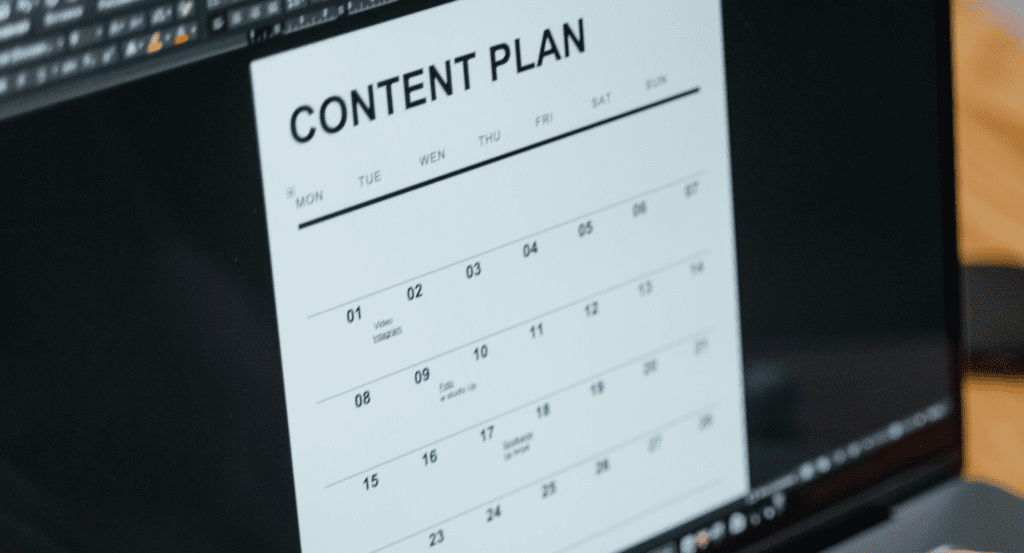One thing is certain: LinkedIn is the network of choice for companies operating in B2B.
But as more professionals flock to the platform, standing out from the crowd becomes a challenge. Because if you want to draw attention to your personal account or that of your company, it will not happen by chance.
NUMERACTIVE presents you today with the essential tools and tips for an effective LinkedIn content strategy. Our article will also cover best practices and ideas for your personal accounts and brands.
4 pillars for a good LinkedIn content strategy
First of all, you should know that there is no "right" way to use LinkedIn for your business. Some companies consider the platform as a tool for raising awareness and improving brand image, others use it to recruitment.
Therefore, defining the positioning of your brand and the type of activities that result from it on the platform is essential to establishing a relevant presence and a good LinkedIn content strategy. Once these are defined, you can focus on your content approach.
To make it easier for you, here are 4 pillars to put in place to guarantee a successful LinkedIn content strategy:
1. Content Diversification
Anything B2B brands can do to get the most out of their content strategies is a plus. In this sense, it is necessary to position yourself as an opinion leader in the sector. For personal accounts, content diversification involves establishing your expertise through different types of content.
This means sharing any combination of the following, for starters:
- blog posts
- Case studies
- Testimonials
- Customer success stories
- Videos (interviews, excerpts from webinars, tips)
2. Creating original content for LinkedIn
On LinkedIn, you can't just re-share existing posts or link and expect engagement.
Overall, not all social platforms want users to be directed off the site if they can avoid it. This explains why in-app content creation is an essential part of LinkedIn content strategy. The rule of thumb is therefore: you have to create content specifically for LinkedIn if you want to be able to create an effective content strategy.
For example, many brands break down or consolidate their blog content into smaller, text-only LinkedIn posts. Others will create a presentation or infographic as an alternative to an external link.
3. Regularity of publication frequency
Frequency and consistency matter on LinkedIn just like any other platform.
In fact, those who post regularly tend to see the most engagement, especially during weekday mornings and early afternoons.
On the other hand, there is no magic number of posts, it depends on you. It is even quite possible to publish several times a day for personal accounts, for example. Determining what is “optimal” will require experimentation.

4. Highlight the corporate culture
First and foremost, as a brand, it's important to center part of your LinkedIn content strategy around company culture. In this way, you will not only be able to stand out but also attract new talent.
Whether it's posts to celebrate new recruits, review key company events (conferences, training, etc.) or even take a stand on social issues, the important thing is to highlight your values, your vision and the way in which these manifest themselves in the daily life of your company.
Examples of LinkedIn content:
It's good to have a few key elements to have an effective LinkedIn content strategy. But in reality it takes time for creation and planning. As we have already mentioned, it is not enough to create content and publish it on social networks.
Content creation requires creativity and constant innovation in order to feed a community always looking for new stimuli. For all these reasons, we offer you some examples of content that can help you get started:
1. Mistakes made/lessons learned:
We all make mistakes, and the best thing that comes out of them is a new lesson learned. So why not talk about it on LinkedIn, even if it means admitting your mistakes.
People will appreciate your honesty, and it might even save them from making the mistake themselves!
It's not just about making mistakes, you can share every time you learn something new.
2. Knowledge and opinions on the sector:
If you see interesting stats about your industry and have feedback on how they apply to you, share them!
For example, if you see that influencer marketing is projected to drop $X million in revenue from the previous year, you can mention how you think this may have happened. You can even go so far as to ask people to comment on what they think is causing this phenomenon. This way, you share valuable information with your audience, but you also get some engagement from them!
3. Motivation
Everyone loves a good motivational post to start their week off right. It can be anything from a well-known or personal quote to one of your success stories that will motivate your audience. (Bonus: You can find an incredible number of quotes and inspirations on pinterest, try to get started, it's great and above all very inspiring, depending on your sector of activity.)
Everyone has their own way of doing it, so find the one that's right for you. It can be any type of message, just something that motivates you to achieve your goals or inspires others.


